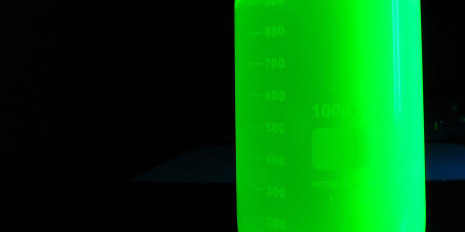Researchers at ETH Zurich have used perovskite materials to create ultra-pure green light for new light-emitting diodes that may pave the way for visibly improved color quality in TVs and smartphones. "To date, no one has succeeded in producing green light as pure as we have," says the ETH Zurich team.

The team explains that it is basically already possible to achieve efficient-enough red and blue light, while green light still needs to improve. This is, the team says, due mainly to human perception, since the eye is able to distinguish between more intermediary green hues than red or blue ones. "This makes the technical production of ultra-pure green very complex, which creates challenges for us when it comes to developing technology and materials," says co-lead author of the report.
It was reported that the team not only made a breakthrough in terms of results, but also in the material and method. The researchers have effectively developed an ultra-thin, bendable light-emitting diode able to emit pure green light using simple room-temperature processes (instead of high-temperature processes often required to produce pure light with LED technology).
The team used nanomaterials to develop the LED technology. A light-emitting diode usually contains a semiconductor crystal that converts electrical current passed through it into radiant light. The raw material is usually indium gallium nitride (InGaN); however, this material does not have the ideal properties for production of ultra-pure green light. The team instead used a perovskite 4.8 nanometres in thickness. This is an important factor, since the color quality depends on the thickness and form of the nanocrystal used.
These flexible, ultra-thin light-emitting diodes are as bendable as a sheet of paper. Hence, they can be produced inexpensively and quickly using the existing roll-to-roll process for example. The team says this will also benefit industrial production in the future. However, it will still take some time before we see the first industrial application of ultra-green light-emitting diodes. The next step for the team is to first improve the efficiency. Today, the LED works at 3% efficiency when converting electricity into light; in comparison, TV screens currently available on the market have efficiency values of 5 to 10%.
The team is hoping that the next version will be 6 to 7% more efficient. The researchers also see potential for improvement in the lifespan of his light-emitting diode. Currently, it illuminates for about two hours, whereas screens available on the market should work for many years.